Feb 21, 2010 Income Tax
Income-tax (First Amendment) Rules, 2010
Notification No. 9/2010/F.No. 142/27/2009-SO(TPL)
Dated 18-2-2010
S.O. (E).– In exercise of the powers conferred by section 295 of the Income-tax Act, 1961 (43 of 1961), the Central Board of Direct Taxes hereby makes the following rules further to amend the Income-tax Rules, 1962, namely:-
1. (1) These rules may be called Income-tax ( First Amendment) Rules, 2010.
(2) They shall come into force from the 1
st day of April, 2009.
2. In the Income-tax Rules, 1962, -
(a) for rules 30, 31 and 31A the following rules shall be substituted, namely:-
“Time and mode of payment to Government account of tax deducted at source or tax paid under sub?section (1A) of section 192.
30. (1) All sums deducted in accordance with the provisions of sections 192 to 194, section 194A, section 194B, section 194BB, section 194C, section 194D, section 194E, section 194EE, section 194F, section 194G, section 194H, section 194-I, section 194J, section 194K, section 194LA, section 195, section 196A, section 196B, section 196C and section 196D shall be paid to the credit of theCentral Government—
(a) in the case of deduction by or on behalf of the Government, on the same day;
(b) in the case of deduction by or on behalf of persons other than those mentioned in clause (a),—
(i) in respect of sums deducted in accordance with the provisions of section 193, section 194A, section 194C, section 194D, section 194E, section 194G, section 194H, section 194-I, section 194J, section 195, section 196A, section 196B, section 196C and section 196D—
(1) where the income by way of interest on securities referred to in section 193 or the income by way of interest referred to in section 194A or the sum referred to in section 194C or the income by way of insurance commission referred to in section 194D or the payment to non?resident sportsmen or sports associations referred to in section 194E or the income by way of commission, remuneration or prize on sale of lottery tickets referred to in section 194G or the income by way of commission or brokerage referred to in section 194H or the income by way of rent referred to in section 194-I or the income by way of fees for professional or technical services referred to in section 194J or the interest or any other sum referred to in section 195 or the income of a foreign company referred to in sub-section (2) of section 196A or the income from units referred to in section 196B or the income from foreign currency bonds or shares of an Indian company referred to in section 196C or the income of Foreign Institutional Investors from securities referred to in section 196D is credited by a person to the account of the payee as on the date up to which the accounts of such person are made, within two months of the expiration of the month in which that date falls;
(2) in any other case, within one week from the last day of the month in which the deduction is made; and
(ii) in respect of sums deducted in accordance with the other provisions within one week from the last day of the month in which the deduction is made:
Provided that the Assessing Officer may, in special cases, and with the approval of the Joint Commissioner—
(a) in cases falling under sub-clause (i), permit any person to pay the income-tax deducted from any income by way of interest, other than income by way of interest on securities or any income by way of insurance commission or any income by way of commission or brokerage referred to in section 194H quarterly on July 15, October 15, January 15 and April 15; and
(b) in cases falling under sub-clause (ii), permit an employer to pay income-tax deducted from any income chargeable under the head “Salaries” quarterly on June 15, September 15, December 15 and March 15.
(1A) All sums paid under sub-section (1A) of section 192 shall be paid to the credit of the Central Government—
(a) in the case of payment on behalf of the Government, on the same day;
(b) in all other cases, within one week from the last day of each month on which the income-tax is due under sub-section (1B) of section 192.
(2) The person responsible for making the deduction from any income chargeable under the head “Salaries” or, the person who pays tax, referred to in sub-section (1A) of section 192 or, in cases covered by sub-section (5) of section 192, the trustees shall pay the amount of tax so deducted to the credit of theCentral Government by remitting it within the time prescribed in sub-rule (1) into any branch of the Reserve Bank of India or of the State Bank of India or of any authorized bank accompanied by an income-tax challan :
Provided that where the deduction or payment, as the case may be, is made by or on behalf of Government, the amounts shall be credited within the time and in the manner aforesaid without the production of a challan.
(3) The person responsible for making deduction under sections 193, 194, 194A, 194B, 194BB, 194C, 194D, 194E, 194EE, 194F, 194G, 194H, 194-I, 194J, 194K, 195, 196A, 196B, 196C and 196D shall pay the amount of tax so deducted to the credit of theCentral Government by remitting it within the time prescribed in sub-rule (1) into any branch of the Reserve Bank of India or of the State Bank of India or of any authorized bank accompanied by an income-tax challan, provided that where the deduction is made by or on behalf of Government the amount shall be credited within the time and in the manner aforesaid without the production of a challan.
Certificate of tax deducted at source or tax paid under sub?section (1A) of section 192.
31. (1) The certificate of deduction of tax at source or, the certificate of payment of tax by the employer on behalf of the employee, under section 203 to be furnished by any person deducting tax in accordance with theprovisions of—
(a) section 192 shall be in Form No. 16:
Provided that in the case of an individual, resident in India, where his income from salaries before allowing deductions under section 16 of the Income-tax Act, 1961 does not exceed rupees one lakh fifty thousand,the certificate of deduction of tax at source shall be in Form No. 16AA;
(b) section 193, section 194, section 194A, section 194B, section 194BB, section 194C, section 194D, section 194E, section 194EE, section 194F, section 194G, section 194-I, section 194J, section 194K,section 194LA, section 195, section 196A, section 196B, section 196C and section 196D shall be in Form No. 16A.
(2) The certificate mentioned in sub-rule (1) shall be furnished within a period of one month from the end of the month during which the credit has been given or the sums have been paid or, asthe case may be, a cheque or warrant for payment of any dividend has been issued to a shareholder:
Provided that where the income by way of interest on securities referred to in section 193 or the income by way of interest referred to in section 194A or the sum referred to in section 194C or the income by way ofinsurance commission referred to in section 194D or the payment to non-resident sportsmen or sports associations referred to in section 194E or the income by way of commission, remuneration or prize on sale of lottery tickets referred to in section 194G or the income by way of commission or brokerage referred to in section 194H or the income by way of rent referred to in section 194-I or the income by way of fees for professional ortechnical services referred to in section 194J or the interest or any other sum referred to in section 195 or the income of a foreign company referred to in sub-section (2) of section 196A or the income from units referred to in section 196B or the income from foreign currency bonds or shares of an Indian company referred to in section 196C or the income of ForeignInstitutional Investors from securities referred to in section 196D is credited by a person to the account of the payee as on the date up to which the account of such person are made,the certificate under sub-rule (1) shall be issued within a week after the expiry of two months from the month in which income is so credited:
Provided further that the certificate in the case of deduction of tax under sub-section (1) of section 192 or, payment of tax by the employer on behalf of the employee, under subsection (1A) of that section or section 194D may be furnished within one month from the close of the financial year in which such deduction was made:
Provided also that the certificate in cases, other than those mentioned in the second proviso, where payment of income-tax deducted is permitted quarterly in accordance with clause (a) of the proviso to clause (b) of sub-rule (1) of rule 30 may be furnished within fourteen days from the date of payment of income- tax:
Provided also that where more than one certificate is required to be furnished to a payee for deductions of income-tax made during a financial year, the person deducting the tax, may on request from such payee, issue within one month from the close of such financial year a consolidated certificate in Form No. 16A for tax deducted during whole of such financial year.
(3) Where in a case, the TDS certificate issued under this rule is lost, the person deducting tax at source may issue a duplicate certificate of deduction of tax at source on a plain paper giving necessary details as contained in Form No. 16 or Form No. 16A, as the case may be.
(4) The Assessing Officer before giving credit for the tax deducted at source on the basis of duplicate certificate referred to in sub-rule (3), shall get the payment certified from the Assessing Officer designated in this behalf by the Chief Commissioner or the Commissioner and shall also obtain an Indemnity Bond from the assessee.
Quarterly statement of deduction of tax under sub?section (3) of section 200.
31A.(1) Every person, being a person responsible for deducting tax under Chapter XVIIB shall, in accordance with the provisions of sub-section (3) of section 200, deliver or cause to be delivered to the Director-General of Income-tax (Systems) or the person authorized by the Director General of Income-tax (Systems), quarterly statement—
(i) in Form No. 24Q in respect of deduction of tax at source under subsections (1) and (1A) of section 192; and
(ii) in Form No. 26Q in respect of other cases of deduction of tax at source,
on or before the 15th July, the 15th October, the 15th January in respect of the first three quarters of the financial year and on or before the 15th June following the last quarter of the financial year:
Provided that where,—
(a) the deductor is an office of Government; or
(b) the deductor is a company; or
(c) the deductor is a person required to get his accounts audited under section 44AB in the immediately preceding financial year; or
(d) the number of deductees’ records in a quarterly statement for any quarter of the immediately preceding financial year is equal to or more than fifty,
the person responsible for deducting tax at source, and the principal officer in the case of a company shall deliver or cause to be delivered such quarterly statements on computer media (3.5” 1.44 MB floppy diskette or CD-ROM of 650 MB capacity):
Provided further that a person other than a person referred to in the first proviso, responsible for deducting tax at source, may at his option, deliver or cause to be delivered the quarterly statements on computer media (3.5” 1.44 MB floppy diskette or CD-ROM of 650 MB capacity):
Provided also that a person responsible for deducting tax at source from the payments referred to in rule 37A shall furnish quarterly statements in accordance with the provisions of rule 37A and rule 37B.
(2) The person responsible for deducting tax at source and preparing quarterly statements shall,—
(i) quote his tax deduction and collection account number (TAN) and permanent account number (PAN) in the quarterly statement:
Provided that the permanent account number shall not be required to be quoted where tax has been deducted by or on behalf of the Government;
(ii) quote the permanent account number of all persons in respect of whose income, tax has been deducted:
Provided that the permanent account number shall not be quoted in respect of the persons to whom the second proviso to sub-section (5B) of section 139A of the Act applies;
(iii) furnish particulars of the tax paid to the Central Government.
(3) The person responsible for deducting tax at source and preparing quarterly statements on computer media shall, in addition to the provisions in sub-rule (2),—
(i) prepare the quarterly statement as per the data structure provided by the e-filing Administrator designated by the Board for the purposes of administration of Electronic Filing of Returns of Tax Deducted at Source Scheme, 2003 supported by a declaration in Form No. 27A in paper format:
Provided that in case any compression software has been used for preparing the quarterly statement on computer media, such compression software shall be furnished on the same computer media;
(ii) affix a label indicating name, permanent account number, tax deduction and collection account number and address of the person responsible for deduction of tax at source, the period to which the statement pertains and the volume number of the said computer media in case more than one volume of such media is used”.
(b) after rule 31A the following rule shall be inserted, namely:-
“Quarterly statement of collection of tax under sub?section (3) of section 206C.
31AA. (1) Every person, being a person responsible for collecting tax under section 206C shall, in accordance with the proviso to sub-section (3) of section 206C, deliver or cause to be delivered to the Director-General of Income-tax (Systems) or the person authorized by the Director General of Income-tax (Systems), quarterly statement in Form No. 27EQ on or before the 15th July, the 15th October, the 15th January in respect of the first three quarters of the financial year and on or before the 30th April following the last quarter of the financial year:
(a) the collector is an office of Government; or
(b) the collector is a company; or
(c) the collector is a person required to get his accounts audited under section 44AB in the immediately preceding financial year; or
(d) the number of collectees’ records in a quarterly statement for any quarter of the immediately preceding financial year is equal to or more than fifty, the person responsible for collecting tax at source, and the principal officer in the case of a company shall deliver or cause to be delivered such quarterly statements on computer media (3.5” 1.44 MB floppy diskette or CD?ROM of 650 MB capacity):
Provided further that a person other than a person referred to in the first proviso, responsible for collecting tax at source, may at his option, deliver or cause to be delivered the quarterly statements on computer media (3.5” 1.44 MB floppy diskette or CD?ROM of 650 MB capacity).
(2) The person responsible for collecting tax at source and preparing quarterly statements shall,—
(i) quote his tax deduction and collection account number (TAN) and permanent account number (PAN) in the quarterly statement:
Provided that the permanent account number shall not be required to be quoted where tax has been collected by or on behalf of the Government;
(ii) quote the permanent account number of all persons in respect of whose income, tax has been collected;
(iii) furnish particulars of the tax paid to the Central Government.
(3) The person responsible for collecting tax at source and preparing quarterly statements on computer media shall, in addition to the provisions in sub?rule (2),—
(i) prepare the quarterly statement as per the data structure provided by the e?filing Administrator designated by the Board for the purposes of administration of Electronic Filing of Returns of Tax Collected at Source Scheme, 2005 supported by a declaration in Form No. 27B in paper format:
Provided that in case any compression software has been used for preparing the quarterly statement on computer media, such compression software shall be furnished on the same computer media;
(ii) affix a label indicating name, permanent account number, tax deduction and collection account number and address of the person responsible for collection of tax at source, the period to which the statement pertains and the volume number of the said computer media in case more than one volume of such media is used.”
(c) after rule 37 the following rule shall be inserted, namely:-
“Returns regarding tax deducted at source in the case of non?residents.
37A. The person making deduction of tax in accordance with sections 193, 194, 194E, 195, 196A, 196B, 196C and 196D of the Act from any payment made to—
(i) a person, not being a company, who is a non-resident or a resident but not ordinarily resident, or
(ii) a company which is neither an Indian company nor a company which has made the prescribed arrangements for the declaration and payment of dividends within India;
shall send within fourteen days from the end of the quarter a statement in Form No. 27Q to the Director General of Income-tax (Systems) or the person or agency authorized by the Director General of Income-tax (Systems) referred to in rule 36A:
Provided that where the income by way of interest on securities referred to in section 193 or the payment to non-resident sportsmen or sports associations referred to in section 194E or the interest or any other sum referred to in section 195 or the income of a foreign company referred to in sub-section (2) of section 196A or the income from units referred to in section 196B or the income from foreign currency bonds or shares of an Indian company referred to in section 196C or the income of Foreign Institutional Investors from securities referred to in section 196D is credited by a person to the account of the payee as on the date up to which the accounts of such person are made, the statement in Form No. 27Q shall be sent within fourteen days after the expiry of two months from the month in which income is so credited.”
(d) for rules 37CA and 37D the following rules shall be substituted, namely:-
“Time and mode of payment to Government account of tax collected at source under section 206C.
37CA. (1) All sums collected in accordance with the provisions of sub-section (1) or subsection (1C) of section 206C shall be paid to the credit of the Central Government within one week from the last day of the month in which the collection is made.
(2) The person responsible for making collection under sub-section (1) or sub-section (1C) of section 206C shall pay the amount of tax so collected to the credit of the Central Government by remitting it within the time prescribed in sub-rule (1) into any branch of the Reserve Bank of India or of the State Bank of India or of any authorized bank accompanied by an income-tax challan:
Provided that where the collection is made by or on behalf of the Government, the amount shall be credited within the time and in the manner aforesaid without the production of a challan.
Certificate for collection of tax at source under section 206C (5).
37D. (1) The certificate of collection of tax at source under sub-section (5) of section 206C to be furnished by any person collecting tax at source under sub-section (1) or subsection (1C) of that section shall be in Form No. 27D.
(2) The certificate referred to in sub-rule (1) shall be furnished within a period of one month from the end of the month during which the amount is debited to the account of the buyer or licensee or lessee or payment is received from the buyer or licensee or lessee, as the case may be:
Provided that where more than one certificate is required to be furnished to a buyer or licensee or lessee for tax collected at source in respect of the period ending on the 30th September and the 31st March in each financial year, the person collecting the tax, may on request from such buyer or licensee or lessee, issue within one month from the end of such period, a consolidated certificate in Form No. 27D for tax collected during whole of such period.
(3) Where in a case, the certificate for tax collected at source issued under this rule is lost, the person collecting tax at source may issue a duplicate certificate of collection of tax at source on a plain paper giving necessary details as contained in Form No. 27D.
(4) The Assessing Officer before giving credit for the tax collected at source on the basis of duplicate certificate referred to in sub-rule (3), shall get the payment certified from the Assessing Officer designated in this behalf by the Chief Commissioner or Commissioner and shall also obtain an Indemnity Bond from the assessee. ”;
(e) for Form No.16 and Form no. 16A the following forms shall be substituted, namely:-
(f) after Form 16A the following form shall be inserted, namely:
(g) Forms 17 and 24C shall be omitted;
(h) In Form 24Q, for Annexure I, the following Annexure I shall be substituted, namely:?
ANNEXURE I: DEDUCTEE WISE BREAK-UP OF TDS
ANNEXURE: DEDUCTEE WISE BREAK-UP OF TDS
(Please use separate Annexure for each line – item in the table at S. No. 4 of main Form 26Q)
(j) for Form No. 27D, the following form shall be substituted, namely:
(k) for Form 27EQ:
(i) for the figure and letter “31A”, the figure and letter“ 31AA” shall be substituted;
(ii) for the Annexure, the following Annexure shall be substituted, namely:?
(l) for Form 27Q:?
(i) for the words, figures and letters “see rule 31A(1)(c)(i)”, the words, figures and letters “see sections 194E, 195, 196A, 196B, 196C, 196D and rules 31A and 37A”, shall be substituted;
(ii) or the Annexure, the following Annexure shall be substituted, namely:?
[Notification No.___ /2010/F.No. 142/27/2009?SO(TPL)]
(M. RAJAN)
Under Secretary to the Govt. of India
Note:? The principal rules were published vide Notification No. S.O 969 (e) dated the 26th of march, 1962 and last amended by Income?tax (13th Amendment ) Rules, 2009 vide Notification No. S.O. 3245 (E) dated 18th December, 2009.
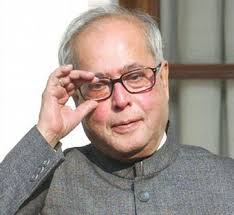
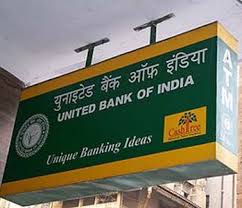
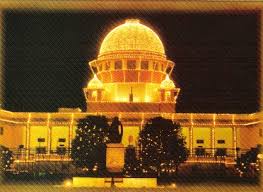
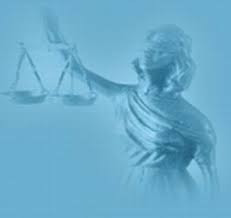
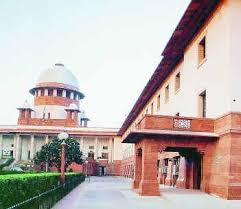

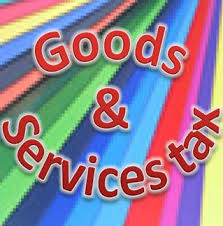
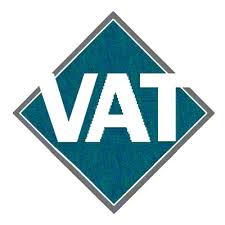
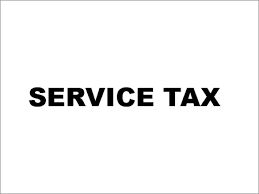
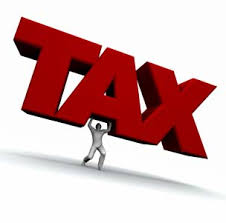

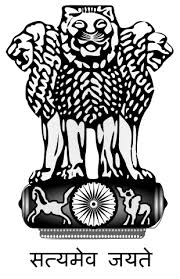

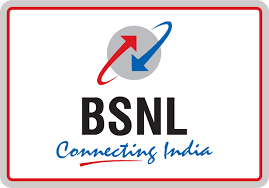







![[Pranab Mukherjee]](http://si.wsj.net/public/resources/images/OB-HQ188_pranab_D_20100221231301.jpg)
![[Manas Mody]](http://si.wsj.net/public/resources/images/OB-HQ185_manasm_D_20100221230751.jpg)
![[Sidharth Negandhi]](http://si.wsj.net/public/resources/images/OB-HQ187_negand_D_20100221230931.jpg)